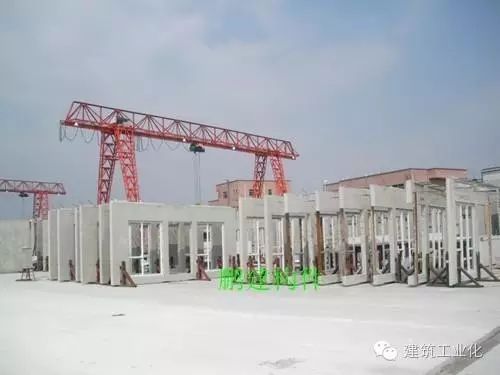

With the continuous development of the construction industrialization in recent years, the term precast concrete (PC) has been frequently mentioned. Many places are now vigorously promoting PC factories, and the entire industry is advocating the development of PC. However, I believe there are some misconceptions; in fact, PC is only a part of building industrialization. While the reasonable application of PC technology can indeed help promote the quality and upgrade of the construction industry, it cannot be simply equated with building industrialization. Emphasizing PC alone will also bring adverse effects on the development of the industry.
PC (Precast Concrete) refers to precast concrete components. Currently, the PC referred to in the industry usually means a concrete structure made of precast concrete components as the main components, assembled, connected, and partially cast in place. This assembly structure system has actually been around in our country for a long time.
“As early as the 1950s, our country began to promote the development of prefabricated houses, and the prefabricated large panel structure system developed relatively quickly.” Due to the prominent housing shortage issue at that time, the prefabricated large panel technology was mainly applied in the residential field and was widely promoted in the 1970s and 1980s. However, on one hand, due to the limited development level of technology, economy, and equipment at that time, the quality and seismic performance of the houses were inadequate; on the other hand, the prefabricated large panel residential styles were relatively single and could no longer meet the diverse needs of housing types in our country. Therefore, from the late 1980s, prefabricated large panel residential buildings gradually exited the historical stage.
Today, the precast concrete structure system promoted in our country, although still an assembly structure, has made significant progress in construction technology, component precision, and equipment level. Now, the connections between precast concrete structural components are mainly cast-in-place nodes, where the steel bars of precast PC components are anchored into the cast-in-place components, resulting in significant quality improvements.
However, even though the connection methods of PC structures have greatly improved compared to before, the quality risks at the connection points between components have not disappeared. Because after the project is topped out, it is difficult to check how the quality of the connection nodes is. Moreover, the current professional level of construction teams in our country is still challenging to ensure that the construction technology of the connection nodes is fully guaranteed in quality and quantity. Many current PC buildings lack sufficient experimental validation support for their connection nodes, and effective supervision cannot be achieved in construction and management. Once issues arise, the consequences could be disastrous.
Currently, the “one-sided” development of PC has raised concerns among some industry experts about whether the overall development direction of building industrialization will be “misled.” Because from “residential industrialization” to “modernization of building construction,” its connotation is broader and wider, not only covering the structural part of residential buildings but also including large-scale industrial production of components and parts, as well as integrating modern scientific technology and modern management methods.
One existing misconception is to simply understand industrialization as PC technology. It should be noted that the advantages of PC require certain boundary conditions to be realized. First, there needs to be a clear understanding of the future market to prevent overcapacity. Second, the existing production capacity of PC components cannot meet the scale of industrial demand. The modernization of the construction industry should be a complete industrial chain, and components and parts are also an important part of industrialization, but their current level of emphasis is far less than that of PC.
We must clearly recognize that building industrialization emphasizes scale efficiency, and PC is no exception. A city should have a clear understanding of its market scale and bearing capacity before vigorously developing PC. Otherwise, factories will find it difficult to sustain development, and given the high transportation and hoisting costs of PC, it could easily lead to adverse effects of “overdoing it.” PC should be actively guided in our country, but it should be adapted to local conditions and developed rationally to avoid hasty implementations. The development of building industrialization does not mean excluding cast-in-place construction, nor does it mean blindly pursuing a high prefabrication rate.
At the same time, the issue of modularity, as a fundamental task for the development of building industrialization, needs to be valued and promoted. Only with unified modularity can building industrialization truly develop along the paths of standardization and industrialization; otherwise, the development of building industrialization is a false proposition.
End
Business Cooperation
Editor: Hui Architecture
For business cooperation, please contact Teacher Wang at 13917195530
For reprints and submissions, please contact qq2427189798
Building Industrialization Website
http://www.buildingchina.cn/
Hui Materials Technology (Shanghai) Co., Ltd.
Shanghai Huipu Enterprise Management Co., Ltd.
www.hywit.com.cn
